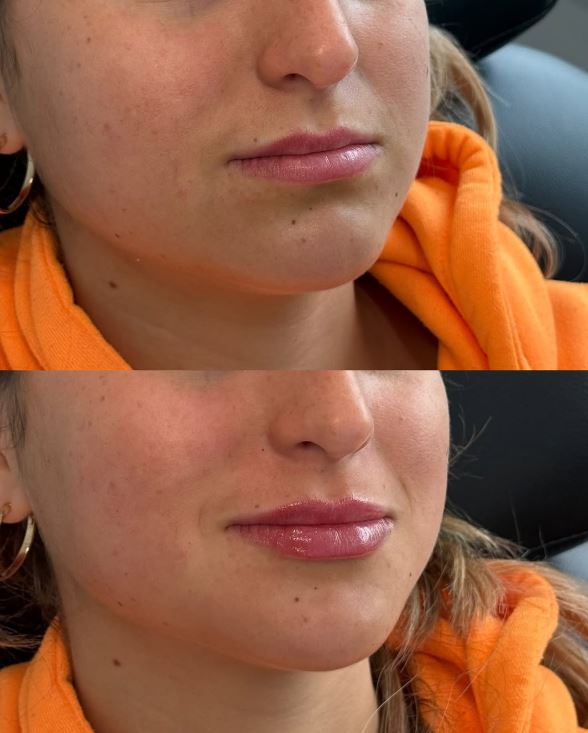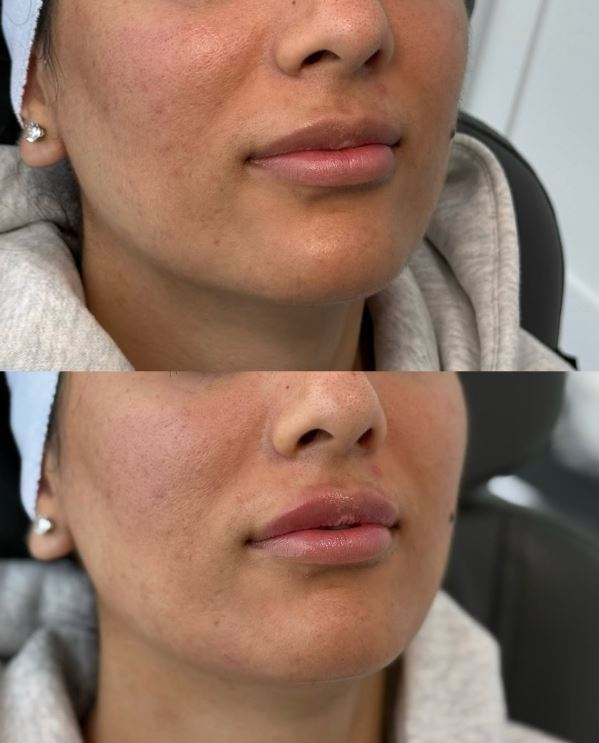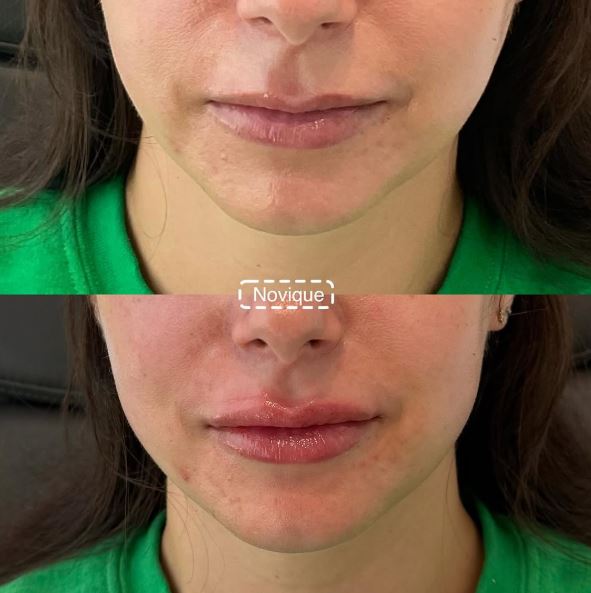
Everyone wants soft, pillowy lips, but the thought of lip fillers often comes with hesitation. Will they look swollen? What if the filler migrates or looks fake? These are real concerns women bring up every day. The truth is, lip fillers can look natural and beautiful when you know what to expect and choose the right injector.
In this guide, we’ll answer the most common questions about lip filler treatments so you can feel confident before your appointment.
Will my lips look too swollen or bruised?
Yes, some swelling and bruising are normal after lip fillers. Most swelling peaks in the first 24–48 hours and then improves over the next week. Bruises may appear around the injection sites but usually fade within 7–10 days. This early phase doesn’t reflect your final results. Once healing is complete, lips settle into a softer, more natural look. If you have an important event, plan your treatment at least two weeks ahead.
How do I avoid migration or the “lip mustache” look?
Migration happens when filler doesn’t stay where it’s supposed to, often showing up as a blurred lip border or a shadowy “mustache” look above the mouth. It’s one of the most common concerns, but it’s also highly preventable.
The biggest factor is injection technique. Filler needs to be placed at the correct depth within the vermilion border—not too shallow, not too deep. Skilled injectors also use the right type of filler; some products are softer and designed for lips, while thicker fillers are better for structure but can cause problems if used in delicate areas.
At Novique, we have consistently produced natural, plump lips with our expert lip filler treatments in Bethlehem and Doylestown, PA. Check out our stunning results below.



What if my lips look overfilled or unnatural?
The “duck lip” look usually comes from too much filler or poor placement, not from lip fillers themselves. When done correctly, fillers enhance your natural shape rather than overpowering it.
The key is balance. Your top and bottom lips should stay in proportion, and the filler should be placed where it supports the lip’s natural anatomy. A conservative approach, adding a little at a time and reassessing, prevents that heavy, overdone look.
Product choice also matters. Softer fillers like Restylane Kysse or Juvederm Volbella are designed for subtle, flexible results that move naturally when you talk or smile. If you want more definition along the border, products like Juvederm Ultra or Restylane Silk can provide structure without bulk. For patients looking for volume with a soft finish, Juvederm Vollure is often used.
If you’re worried about looking “too done,” start small. You can always add more at a follow-up appointment, but removing excess filler takes more time and extra steps.
What about lumps, bumps, or uneven texture?
It’s common to feel small lumps or bumps after lip filler, especially in the first couple of weeks while swelling settles. In most cases, these smooth out on their own as the filler integrates with your tissue. Gentle massage, if recommended by your injector, can also help.
If a bump doesn’t improve, your injector can quickly fix it with a small adjustment, or if necessary, dissolve a small amount of product. True complications like painful, hard nodules are rare, but they’re another reason to see an experienced provider.
Can fillers change color or look blue?
Yes, but only in specific situations. This is called the Tyndall effect, and it happens when filler is placed too close to the surface of the skin. The light reflects off the product and creates a bluish or gray tint.
The good news is that it’s preventable. Proper depth and technique make all the difference. Experienced injectors know how to place filler deeper in the tissue to avoid this effect. If the Tyndall effect does occur, it isn’t dangerous, but it usually requires dissolving and reinjecting the filler at the right depth.
Will my lips feel heavy, dry, or painful?
It’s normal for lips to feel tender, tight, or a little “heavy” in the first few days after filler. This comes from both the injections and the swelling, not the filler itself. As the tissue heals, that sensation fades and your lips feel natural again.
Some people also notice dryness or chapping. This happens because the lip tissue is adjusting and slightly inflamed. A simple non-medicated balm is usually enough until healing is complete.
Pain should be minimal. Most fillers are blended with lidocaine to keep treatment comfortable, and any soreness afterward usually feels like mild bruising. If pain feels sharp, severe, or gets worse instead of better, that’s not normal. Contact your injector right away.
What should I avoid after lip filler?
The first 24–48 hours are the most important for healing. Following these simple steps helps your lips heal smoothly and keeps your filler exactly where it should be.
- No touching or massaging your lips unless your injector tells you to. Pressure can move the filler.
- Skip the gym and hot environments (saunas, hot yoga, steam rooms). Heat and increased blood flow make swelling and bruising worse.
- Avoid alcohol and blood-thinning meds right after treatment—they raise your risk of bruising.
- Don’t sleep face down. Try to rest on your back so you don’t put pressure on your lips.
- Hold off on makeup around the injection sites for at least 24 hours to reduce infection risk.
What lip filler lasts the longest?
The longest-lasting fillers for lips are typically Juvederm Volbella, Juvederm Vollure, and Restylane Kysse, which can hold results for about a year. Keep in mind that how long your filler lasts also depends on your metabolism. If your body breaks down HA quickly, results may fade faster.
Even the most durable filler won’t last forever. Many patients schedule touch-ups every 9–12 months to keep lips looking pillowy without waiting for all the product to dissolve.
What happens to lip filler over time?
Lip filler isn’t permanent. Over the months, your body gradually breaks down the hyaluronic acid and absorbs it. This is why lips slowly return to their natural size if you don’t keep up with touch-ups.
As filler fades, results don’t usually disappear overnight. You’ll notice a soft decrease in volume, starting around 6 months and becoming more obvious by 9–12 months. Some people also describe their lips “feeling flat” again as the definition along the border softens.
Will people be able to tell I had fillers?
Not if it’s done well. Good lip filler enhances your natural shape and adds subtle volume; it shouldn’t look obvious. Most people will just notice that your lips look smoother, fuller, and more defined without being able to tell why.
Overfilled lips, sharp borders, or migration are what make filler noticeable. Choosing a skilled injector, starting conservatively, and using the right type of filler are the best ways to keep your results natural.
If you want pillowy lips without the “done” look, the most important step is choosing an experienced injector. At Novique, our licensed aestheticians customize every treatment to your features and goals for results that look natural and feel confident.
Call us today to book your personalized lip filler treatment in Bethlehem or Doylestown, PA. We proudly serve patients across Allentown, Fountain Hill, Warminster, Montgomeryville, Philadelphia, and Bucks County.


